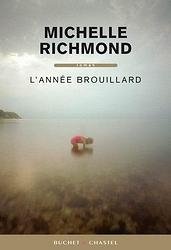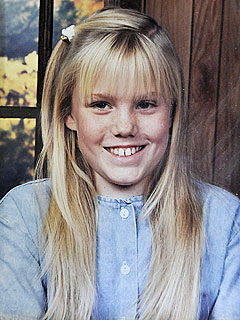The Year of Fog
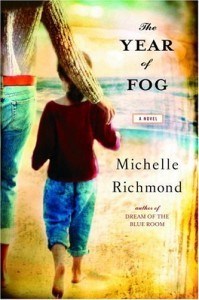 “A mesmerizing novel of loss and grief, hope and redemption, and the endurance of love.” Library Journal, starred review
“A mesmerizing novel of loss and grief, hope and redemption, and the endurance of love.” Library Journal, starred review
Purchase from Indiebound, Barnes and Noble, others
ABOUT THE BOOK: Six-year-old Emma vanished into the thick San Francisco mist. Or into the heaving Pacific. Or somewhere just beyond: to a parking lot, a stranger’s van, or a road with traffic flashing by. Devastated by guilt, haunted by her fears about becoming a stepmother, Abby refuses to believe that Emma is dead. And so she searches her mind for clues about what happened that morning and cannot stop the flood of memories reaching from her own childhood to illuminate that irreversible moment on the beach.
Now, as the days drag into weeks, as the police lose interest and fliers fade on telephone poles, Emma’s father finds solace in his faith, but Abby can only wander the beaches and city streets, attempting to recover the life and the little girl that she lost. With her hope fading and her life at a crossroads, she will leave San Francisco for a country thousands of miles away. And it is there, by the side of another sea, on a journey that has taken her into a strange subculture of wanderers and surfers, that Abby will make the most astounding discovery of all, as the truth of Emma’s disappearance unravels with stunning force. Sample instantly on Nook or other e-readers.
NEW:Day 49: The Missing Final Chapter
“Richmond gracefully explores the nature of memory and perception in key passages that never slow the suspense of the search…a page-turner with a philosophical bent.” Booklist
“What happened to six-year-old Emma? The answer, and its implications, will keep you on the edge of your chair.” Seattle Times
“The book of the summer…If you read only one book, read The Year of Fog.” Olivia de Lamberterie, Tele Matin, Ch 2, France. “A breathtaking novel…magnetic.” Elle France. “The gripping story of the search for a missing child.” Radio France. One of the “great successes of the summer.” Le Figaro, France “Intimate and exciting…a good, long, fascinating metaphysical novel.” Benzine Magazine, France
“An unusually imaginative novel of family, loss and hope, The Year of Fog tackles mysteries of time, memory and the human heart.” ~South China Morning Post
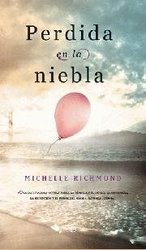

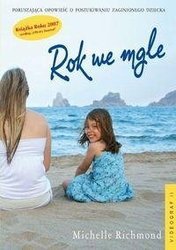
“Heartbreaking and riveting, this novel is beautifully written” ~Closer Magazine, UK. “Mesmerising and harrowing… Richmond has established herself as the mistress of the kind of literary mystery that reads like a fine thriller but with added insight and wisdom.” ~Daily Mail “Impossible to put down…five stars.” ~News of the World 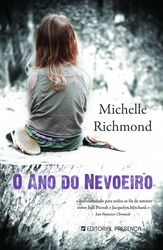
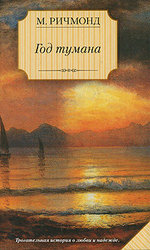

“A harrowing, beautifully written story. What happened to six-year-old Emma? The answer, and its implications, will keep you on the edge of your chair.” Seattle Times “Deeply moving.” ~Madame Magazine, Germany. “Psychologically sophisticated suspense.” ~Freundin, Germany. “I’ve never found it so difficult not to race to the last page.” Brigitte Magazine, Germany. “Shines with a pleasing literary style, a quiet narrative and intense characters.” WDR5, Germany “Richmond masterfully conjures feelings of love and loss.” Paisajes, Spain. “Intriguing.” Que Leer, Spain. “With sensitivity, Michelle Richmond examines the fragility of our own stories and the role of memory.” Lalibre, Belgium
“In this spare page-turner, Richmond draws complex tensions from the setup of a child gone missing… The book is beautifully paced – one feels Abby’s clarity of purpose from the first page. The sure-handed denouement reflects the focus and restraint that Richmond brings to bear throughout.” Publishers Weekly
Grade: A. “Gripping…Richmond makes the reader feel the gamut of emotions, from the initial disbelief and blind hope to the nagging guilt and gnawing despair.” ~Alexis Burling,The Washington Post
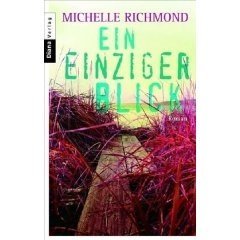
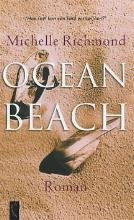
“What marks us, and how do we react to our impressions, both large and small, of life? These are the questions asked by San Francisco author Michelle Richmond in her wonderful second novel, “The Year of the Fog. Despite all its drama — and this heart-wrenching tale does ratchet up the tension — this is primarily a story of echoes and repercussions…spare, moving…it’s all done delicately, in almost poetic terms.” Clea Simon, The San Francisco Chronicle (read the review here)
GBS_insertEmbeddedViewer(‘ISBN:9780385340113?,600,500);
// ]]>
“Richmond’s second novel is a startlingly original take on every parent’s worst nightmare…An unsettling and powerful punch of a book, The Year of Fog unfolds as a waking dream about the persistence of memory and the extraordinary force of love.” Cookie Magazine
“A good part of what makes “The Year of Fog” compulsively readable is the voice of its narrator. Abby’s tone is quietly conversational, almost as though she is sitting across the table and, over a cup of coffee, calmly telling her tale. The dispassionate tone reveals a brutally honest teller, and only serves to heighten the tension of the story…both believable and bittersweet.” Robin Vidimos, The Denver Post
“A harrowing, beautifully written story of a photographer and soon-to-be stepmom whose momentary lapse in attention results in the disappearance of her fiance’s little girl on a foggy beach in San Francisco. What happened to 6-year-old Emma? The answer, and its implications, will keep you on the edge of your beach chair.” Melinda Bargreen, Seattle Times.
“[The Year of Fog] manages to have both the high-velocity pace of a ripped-from-the-headlines thriller and nuanced insights into the nature of memory, love, family, and guilt…Richmond burros into the details of San Francisco’s geogaphy and neighborhoods…Like all good mysteries, The Year of Fog twists the reader’s expectations, turning some of what we think we know about missing child cases on its head and providing a surprising and satisfying ending that manages to retain the complexity of real life. It is, in the end, a very memorable book.” ~Samantha Berry, Marin Magazine
“Much more than a tale of a woman looking for a child who’s lost. It’s also about the nature of passion, guilt, and most of all, memory…The Year of Fog also serves as a real-life guidebook of sorts to some of San Francisco’s lesser known neighborhoods and sites…Richmond captures the spirit of life in The City.” ~Leslie Katz, The San Francisco Examiner
“A hauntingly written novel of two people dealing with loss in their own ways… Richmond’s dream-like prose lends to an eerie atmosphere, and the solving [of] the mystery of Emma’s disappearance will leave you breathless.” Parkersburg News & Sentinel
“A child’s disappearance is at the heart of this riveting read that follows photographer, fiance and soon-to-be-stepmother Abby Mason. Once the drama starts, prepare to race to the last page.” Hallmark Magazine
“Grab your beach bag and call your book club, The Year of Fog probably will be the best new novel of the summer…vivid environmental descriptions and psychologically sound character development. As with all good novels that border on great literature, the plot is multilayered. The Year of Fog will leave the reader both perplexed and enlightened.” Reba McMellon, The Mississippi Press
“A book I just finished this morning – reading while I was making breakfast because I absolutely could not put it down- is The Year of Fog by Michelle Richmond. Every single word in this book was worth reading.” Tina Ristau, Des Moines Register
“Richmond artfully combines Abby’s research on memory and a sensitive depiction of her relationship with fiance Jake, resulting in a compelling, smart novel that you truly will find difficult to put down.” Birmingham Magazine
“While The Year of Fog is structured around the search for Emma, it offers a deeper meditation on the fragility of love. Which is the stronger loyalty, to child or lover? How can we relieve someone else’s despair? These sometimes unanswerable questions form the heart of Richmond’s book…The Year of Fog works well as both a literary mystery and a poignant portrait of a family ripped apart by random circumstance.” Frances Dinkelspiel, Culture Vulture
“The Year of Fog [is] written so movingly that an experience that is far from universal becomes immediate and personal… the vignettes throughout create a larger poetica in which it is the reader who becomes, happily, lost.” Santa Fe Reporter
“The dilemma with Michelle Richmond’s newest novel is this: the plot is so compelling you can’t read fast enough, but the writing is so crisp and exact you want to savor every word…Nothing is sugar-coated in these pages, which makes Abby’s self-realizations all the more honest, satisfying, and true. ” Anita Garner, Alabama Writers’ Forum
“Beautifully written, with deep insights into the human soul.” Willow Glen Books, San Jose, CA
“In The Year of Fog, Richmond gives us both a mystery and a meditation on memory. Profound, deeply moving, endlessly gripping; you will devour it in a weekend and turn it over to begin again.” ~Andrew Sean Greer, author of The Confessions of Max Tivoli
“From the very first chapter The Year of Fog grabbed me by the throat and didn’t let go. Michelle Richmond is that marvelous thing, a writer who can craft a gorgeous sentence and also create a plot so propulsive that it hurts to put the book down, even for a minute. And forget about sleeping. You won’t do that until you’re finished.” ~Ayelet Waldman, author of Love and Other Impossible Pursuits
“Michelle Richmond’s The Year of Fog is a harrowing and unputdownable novel. A moving account of one woman’s ardous journey from an ordinary day to nightmare to, ultimately, redemption. Few novelists put their characters through harder paces than Richmond. And readers have no choice but to carried away by the enduring beauty of this story.” ~Peter Orner, author of The Second Coming of Mavala Shikongo & Esther Stories
“Suspenseful, richly imagined, and ultimately hopeful, The Year of Fog is a keeper. Michelle Richmond is a talent to watch.” ~Joshilyn Jackson, author of Gods in Alabama and Between, Georgia
“Michelle Richmond crafts an addictive, haunting story, filled with brainy tidbits and a local’s love of landscape.” ~Michelle Tea, author of Valencia, Rent Girl, Rose of No Man’s Land
“The Year of Fog is impossible to stop reading. Even as I savored Michelle Richmond’s rich prose and fascinating passages on photography and the nature of memory, I couldn’t turn the pages fast enough. A missing child, a haunting neighborhood, a search for love, The Year of Fog has it all. Make a sandwich now: you won’t stop reading for hours.”~Amanda Eyre Ward, author of How to Be Lost and Sleep Toward Heaven
“In The Year of Fog, Michelle Richmond has performed something of a magic act. From the first few pages I was hooked. As though she knows the ride she is is taking us on is harrowing, Richmond peppers the story with mischievous humor and unexpected insights, all layered over a gorgeous love letter to San Francisco.” ~Heather Juergensen, co-writer, actor, Kissing Jessica Stein
“Michelle Richmond gives us a fascinating look into the mind of an artist. Richmond’s prose is sensual, her images fresh, her writing, lyrical and lovely.” ~Ann Cummins, author of Red Ant House and Yellowcake
The story behind the book: Emma Balfour walked into my life in the summer of 2003. Our paths collided on Ocean Beach, the 3-mile stretch of gray sand and graffiti-spattered seawall marking the western edge of the city… Publishers of The Year of Fog in translation: Random House Germany/Diana, Archipel(Netherlands), Tericum Kiado (Hungary), Videograf ii(Poland), AST (Russia), Editorial Presenca (Portugal), Buchet-Chastel (France), La Esfera De Los Libros (Spain), Musa Knyga (Lithuania), Kirpi Yayincilik (Turkey)
